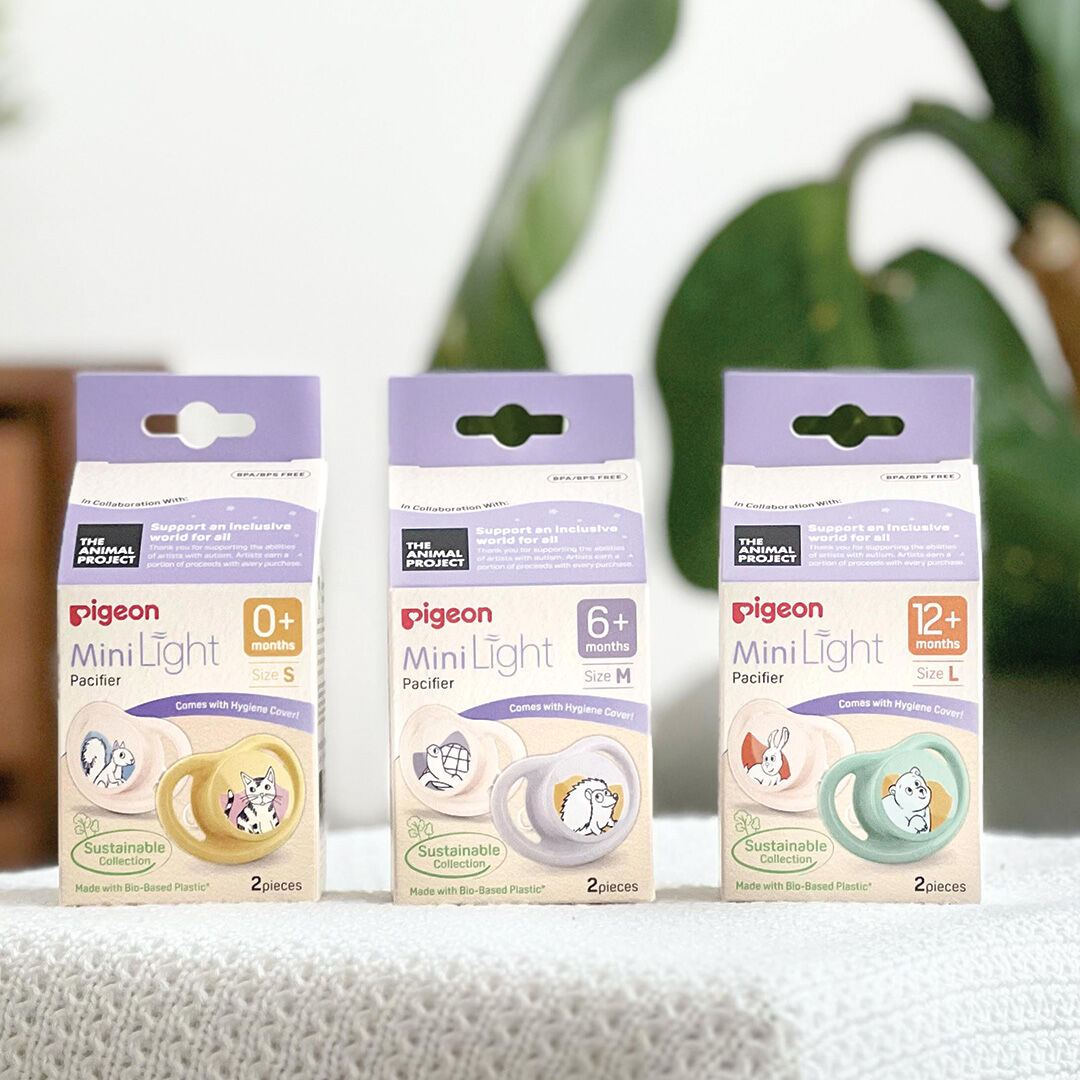Recent Articles
-
Is Your Baby’s Cup Helping or Hindering Their Oral Development?
Learn from Speech & Feeding Therapist Dr Lisa Lim how straw drinking supports your baby’s oral development, and why the Pigeon StarTouch™ Cup makes the difference. -
MiniLight Pacifiers Made with Purpose Initiative
Discover the Pigeon MiniLight Pacifier, ultra-light, baby-safe, and designed with purpose through The Animal Project collaboration for comfort and inclusion. -
SofTouch vs. Step-Up: Which Pigeon Bottle Fits Your Baby’s Stage?
Discover the difference between Pigeon SofTouch™ and Step-Up™ bottles — two feeding systems designed to support your baby from first latch to independent sipping.
Breastfeeding to Bottle
 Transitioning from breastfeeding to a baby bottle can be a scary time for parents, but there are ways to make the switch smoother. Read on for helpful tips about the best baby bottles on the market, finding the right silicone bottle teat and more.
Transitioning from breastfeeding to a baby bottle can be a scary time for parents, but there are ways to make the switch smoother. Read on for helpful tips about the best baby bottles on the market, finding the right silicone bottle teat and more.
What are the reasons to transition from breastfeeding to bottle?
There are many reasons why you might need to switch from breast to bottle – and every child will react to the weaning process differently.
Maybe you’re getting ready to return to work and you want to make sure your baby isn’t reliant on breastfeeding as their main source of nutrition. Perhaps you’ve had 6–12 months of bonding time with your baby but you want to move them onto a bottle to make life easier for everyone. Or maybe your baby has decided that they are no longer interested in breastfeeding and are starting to self-wean.
Whatever the case, when it comes time to move from the breast to the bottle, it’s important to take things slow and not to become disheartened if the transition isn’t perfect from day one.
Are you a new mum? Visit our guide to Breastfeeding for New Mums.

Recommended baby bottles and teats for breastfed babies
When you’ve been around children long enough, you know that they each react to different things in their own way. The same is true for bottle-feeding – which is why it’s great there’s such a large selection of baby bottles and teats to choose from!
You might think the bottle size and shape is the most important choice when transitioning to a baby bottle, but it’s actually the teat that you need to focus on.
Bottles with a wide neck like the SofTouch Bottle 160ml or SofTouch Bottle 240ml, which are supplied with the SofTouch Peristaltic PLUS Teat, are recommended for transitioning. The teat has been designed to mimic the mother’s breast shape. This helps avoid nipple confusion, while the textured surface allows for the perfect latch and a good tongue position. Best of all, the Air Ventilation System (AVS) ensures constant milk flow and fights against colic.
SofTouch Peristaltic PLUS Teats come in a range of sizes to support your baby's development. Their design is the result of over 60 years of in-depth design and research in conjunction with paediatricians, paediatric nurses, maternity staff and thousands of babies and their families.
Don’t be disheartened if your baby doesn’t want to feed from a bottle right away – even if you are feeding them breastmilk in the bottle. Sometimes you need to try different teat sizes and flows to find the perfect match. You also need to give your baby some time to adjust. As similar as a teat can be to breast shape, it isn’t your breast and your baby knows that!

When should I change my baby’s bottle teats?
It’s recommended that you change your baby bottle teats every two months and always clean and sterilise them thoroughly before use. If they are damaged, make sure you replace them immediately.
In terms of teat size and flow, that will depend on your baby. However, Pigeon’s SofTouch Peristaltic PLUS range has recommended teats according to age, from slow flow teats you can start with your baby from birth, right through to high flow from 15 months onwards.
How do I know when my baby is ready for the next bottle teat?
Just like everything else your baby does, they will ‘tell’ you it’s time to move up to the next size teat in a number of different ways. Common examples include taking longer to finish their feeds, becoming fussy or irritable while feeding, or refusing to feed from the bottle altogether. Sometimes the teat will collapse while the baby is feeding. This happens when the baby is sucking strongly to get the milk to flow faster – a good indicator that it’s time to move up a size!
For more tips and advice, check out our helpful Baby Hub Blog and Baby Bottles FAQ.





